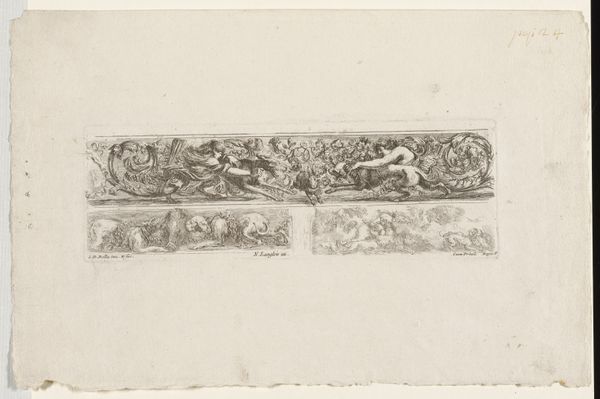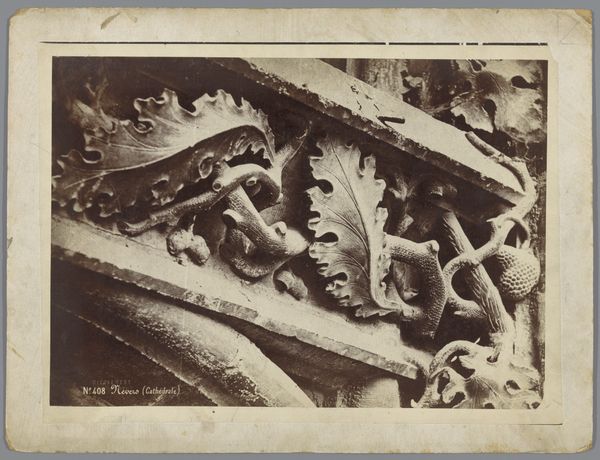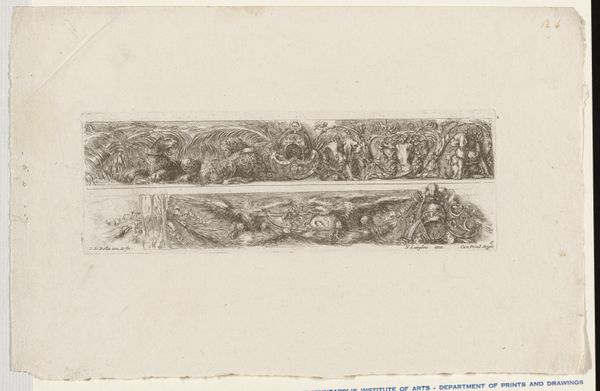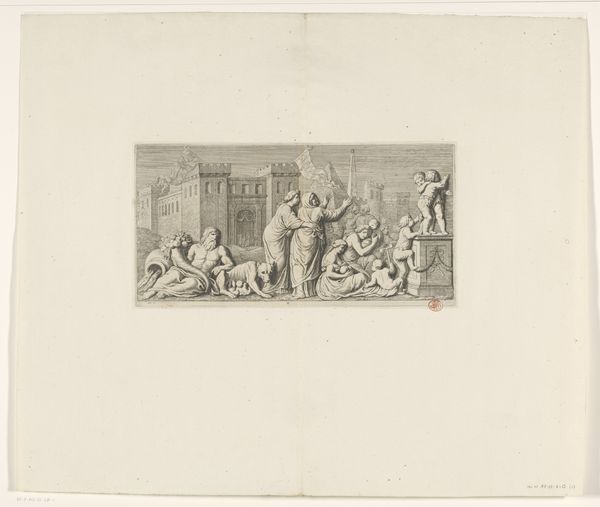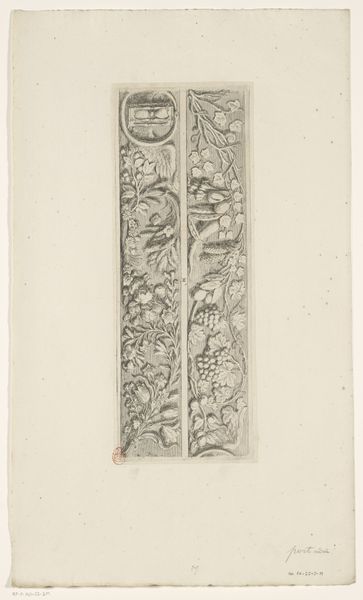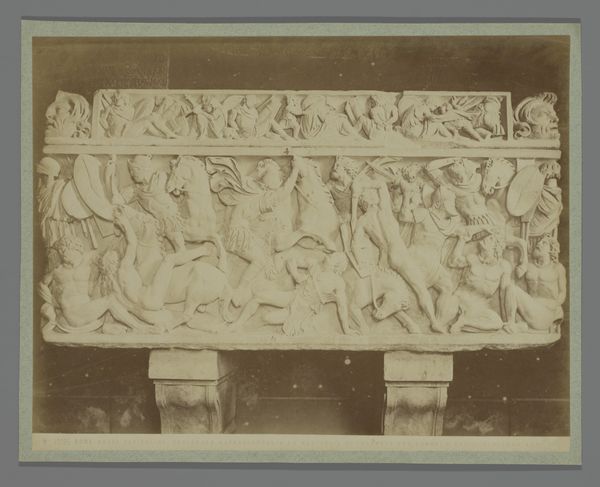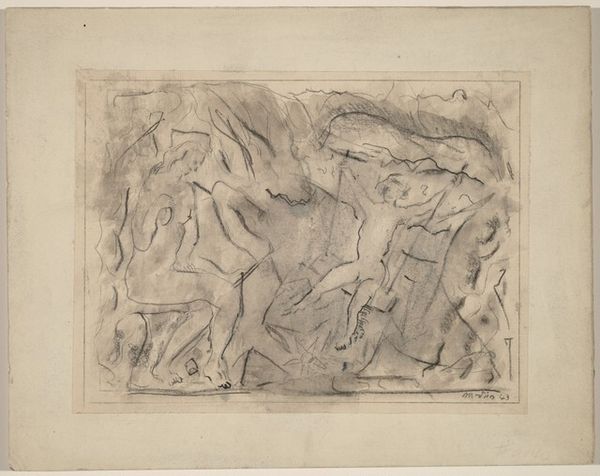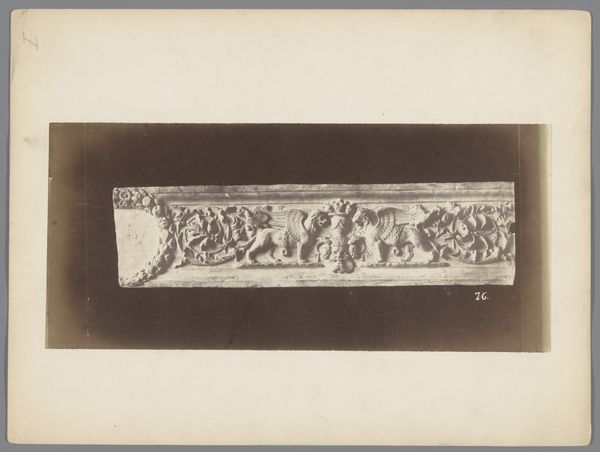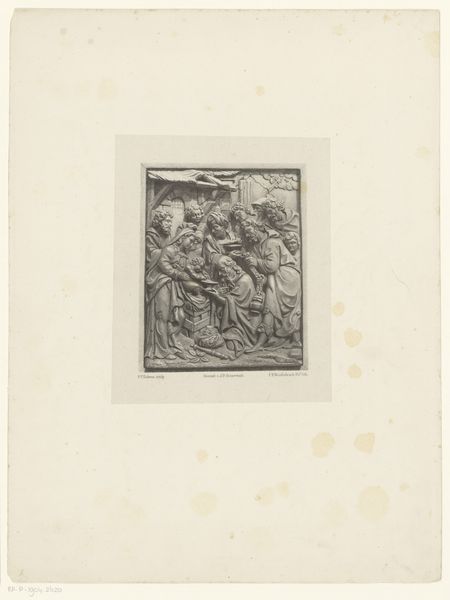
Afgietsel van een reliëf in de Kathedraal van Reims c. 1875 - 1900
0:00
0:00
adolphegiraudon
Rijksmuseum
print, relief, photography
# print
#
relief
#
photography
#
geometric
#
ancient-mediterranean
Dimensions: height 203 mm, width 259 mm
Copyright: Rijks Museum: Open Domain
Curator: Before us is a photograph titled "Afgietsel van een reliëf in de Kathedraal van Reims," dating from around 1875-1900, attributed to Adolphe Giraudon. The piece is housed here at the Rijksmuseum. Editor: The density of detail is incredible! At first glance, the composition seems to teeter on the edge of visual chaos, with layers of carved leaves competing for space. Yet, the consistent monochrome palette somehow manages to unify the relief. Curator: This is more than just a study in aesthetics. Consider the means of production here. Giraudon wasn't simply creating art, but documenting the labor involved in architectural ornamentation. He reproduced and made accessible this specific craftsmanship found at the Reims Cathedral for the masses, transforming the unique into reproducible commodities via the relatively new medium of photography. Editor: True, but let’s not discount the visual impact. The deep undercuts and high relief capture light so dramatically. Notice how Giraudon, or perhaps the original sculptors at Reims, manipulate form to create a dance of light and shadow. The very arrangement of the leaves, their varying sizes and the overlapping, lend the surface a tangible texture. Curator: The materiality itself tells a story. To produce casts of this quality would require specialized plaster workers to create highly accurate moulds. Giraudon’s photograph flattens the original texture, abstracting the original materials, transforming a three dimensional object into a flat commodity available for wider consumption. Editor: Yes, but let's acknowledge the formalism. The underlying geometry is present, isn’t it? Look at how the artist arranged the leafy patterns according to some principles of order, or maybe visual harmony if not strict geometric. Curator: To consider geometry is a deflection! We must acknowledge that this isn't simply organic decoration or nature captured in stone. It is part of the Cathedral itself: an agent in projecting authority and wealth and religious doctrine, with every step from its original construction, to the making of this replica adding another dimension of societal control through symbolic architecture. Editor: Fair enough, although, in examining how textures, the photograph's scale, and these patterns interplay, one starts to uncover principles relevant far beyond the cathedral walls. Curator: Ultimately, it serves as an artifact representative of labor and reproducibility of architectural design. Editor: Perhaps so, but seeing the light on each individual frond is quite a feast for the eyes in its own right.
Comments
No comments
Be the first to comment and join the conversation on the ultimate creative platform.
